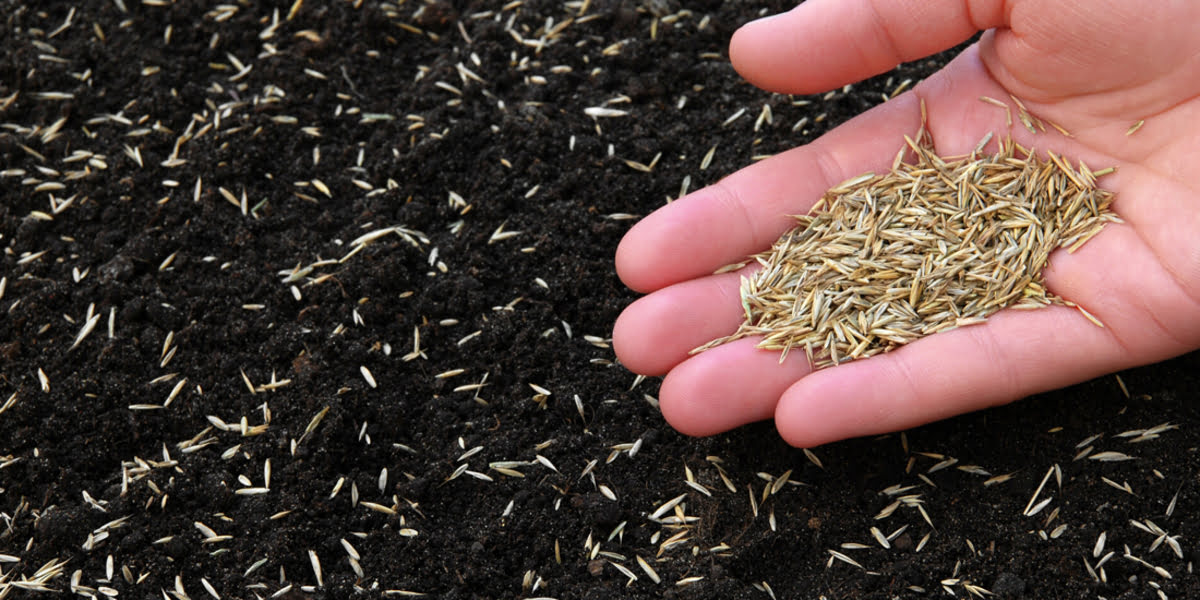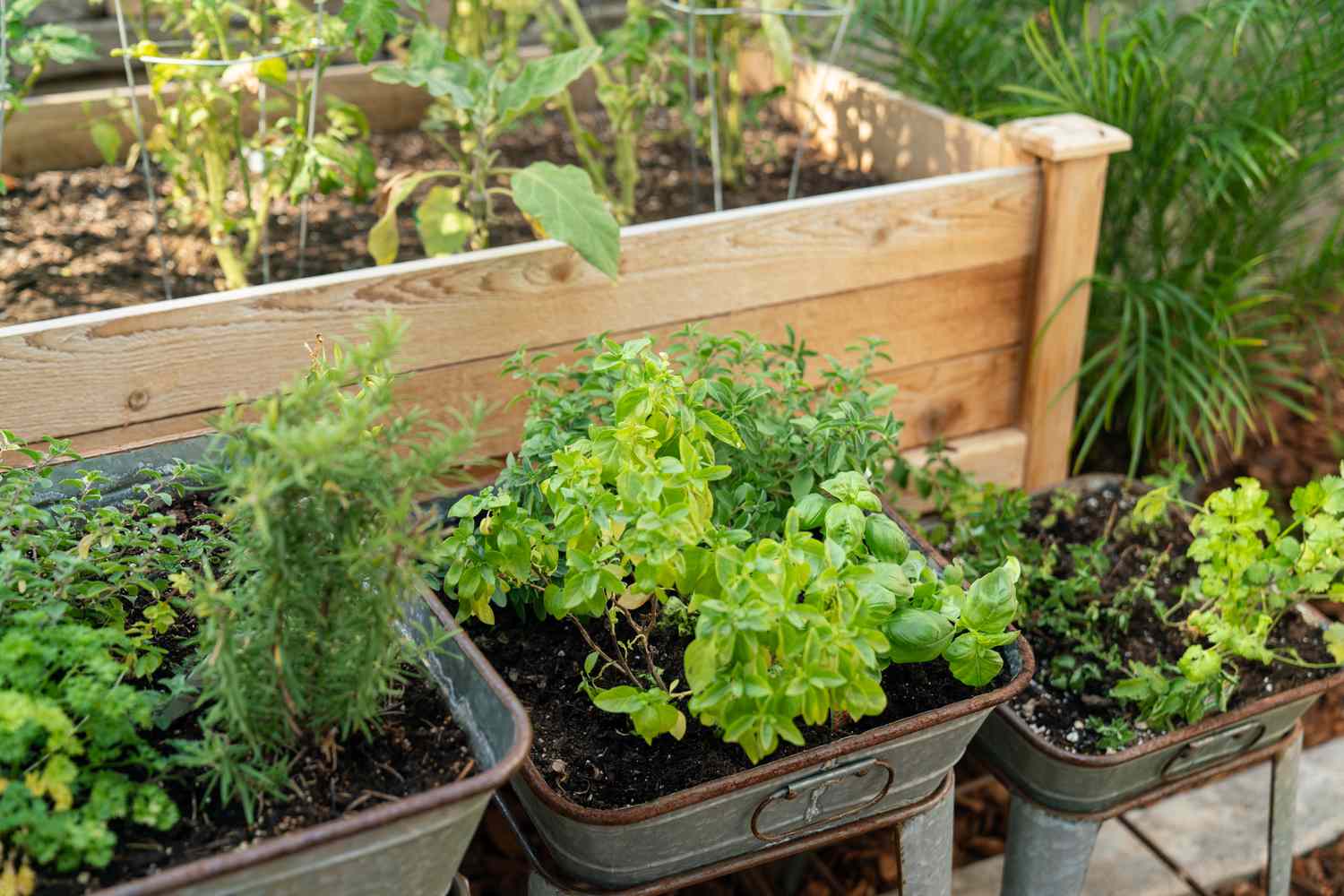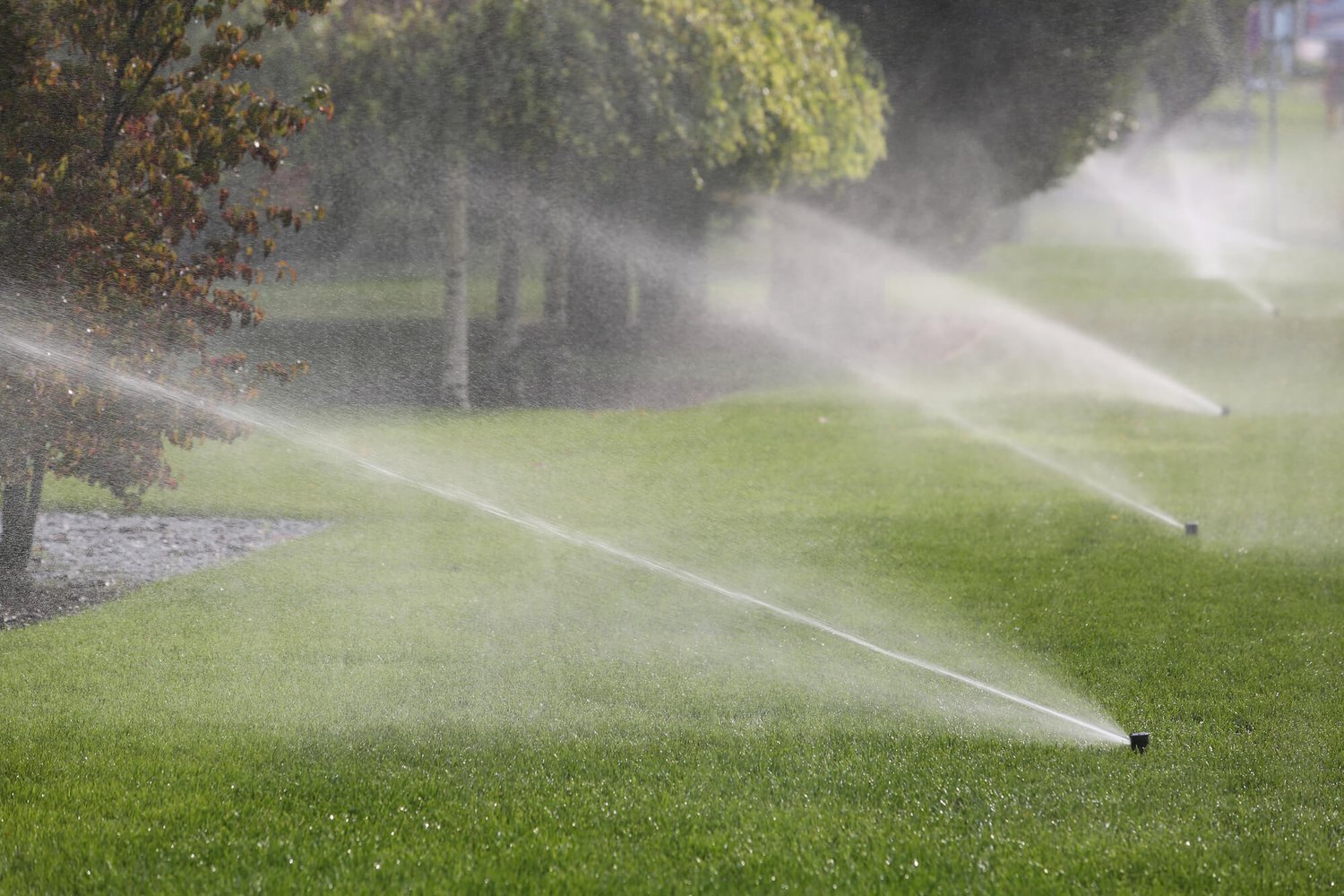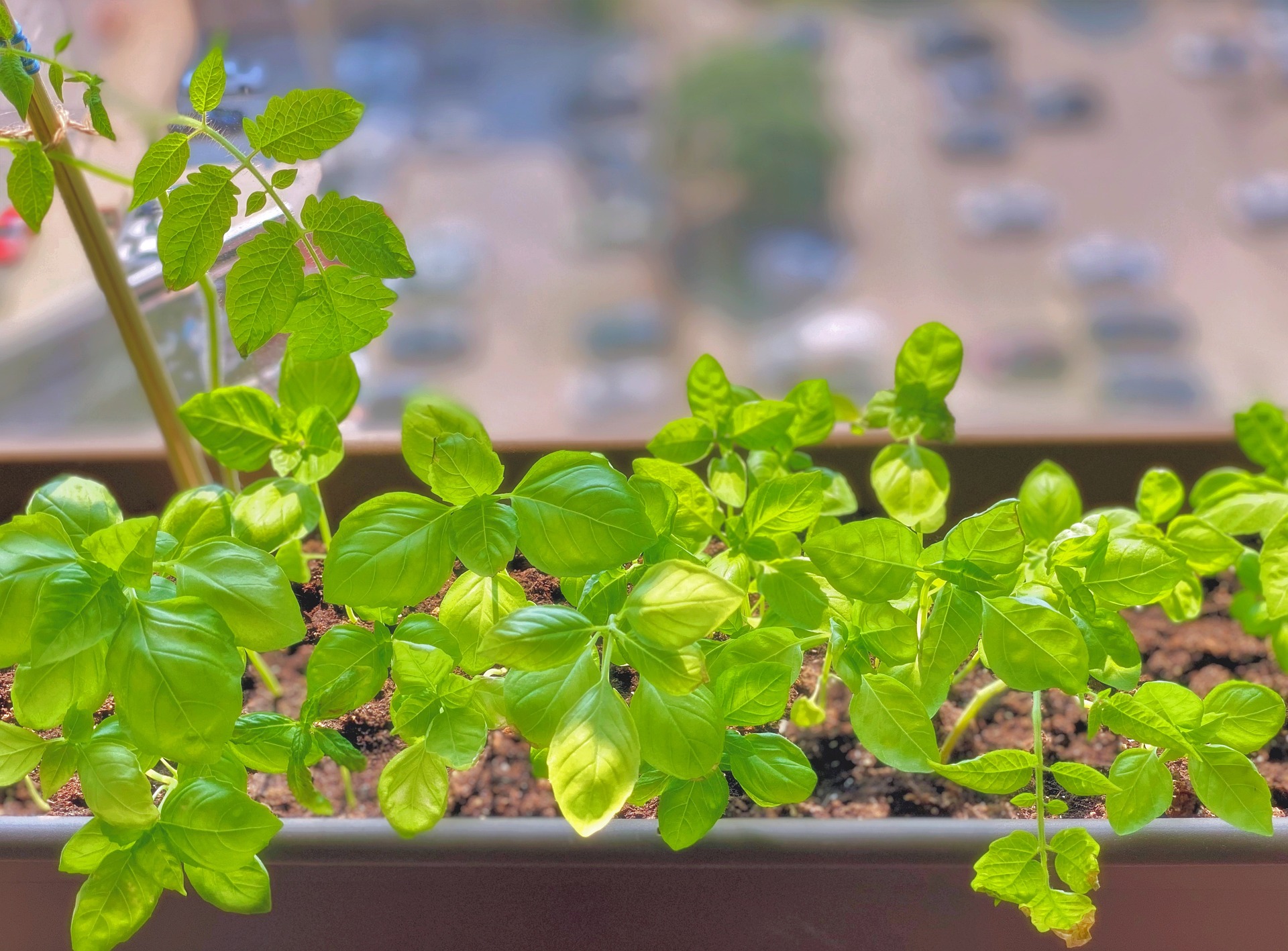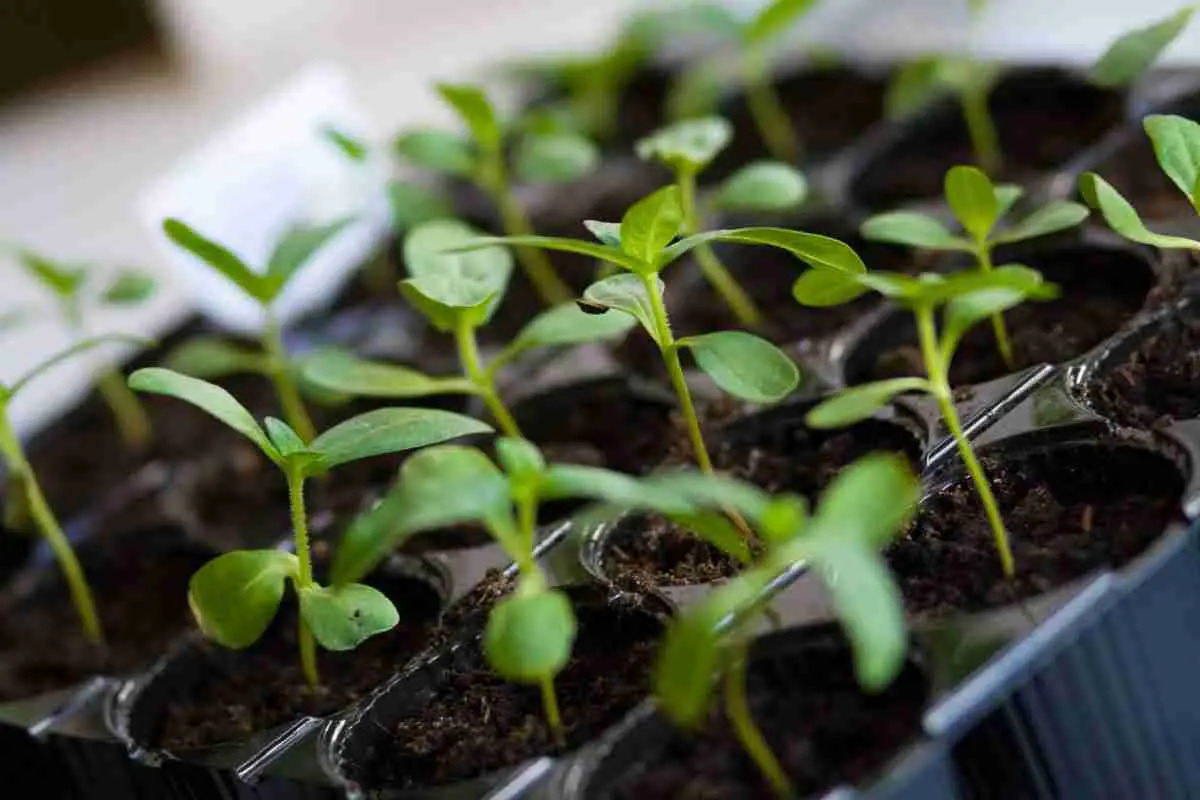Home>Gardening Basics>Understanding Soil>How Much Topsoil Do I Need To Grow Grass
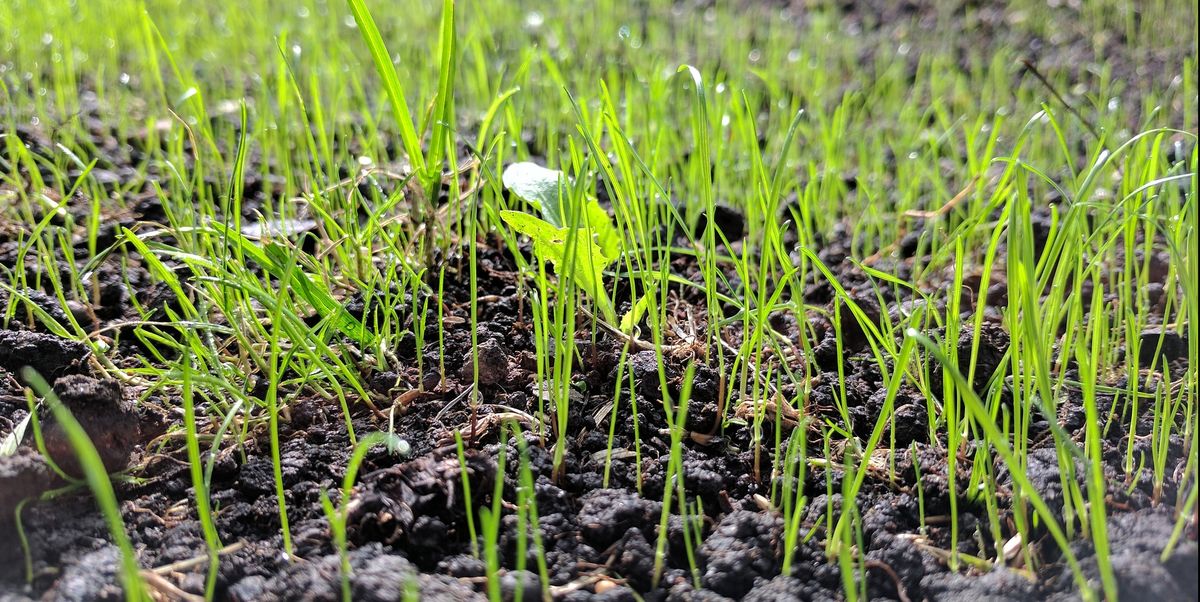

Understanding Soil
How Much Topsoil Do I Need To Grow Grass
Modified: February 8, 2024
Discover the key to successful grass growth with our guide on understanding soil. Learn how much topsoil you need to create the perfect conditions for a lush, healthy lawn.
(Many of the links in this article redirect to a specific reviewed product. Your purchase of these products through affiliate links helps to generate commission for Chicagolandgardening.com, at no extra cost. Learn more)
Table of Contents
- Introduction
- Understanding topsoil and its importance in grass growth
- Factors to consider when determining how much topsoil you need to grow grass
- Calculating the amount of topsoil needed based on your lawn area
- Steps to prepare your lawn and apply topsoil for grass growth
- Tips for maintaining the topsoil and promoting healthy grass growth
- Conclusion
Introduction
Welcome to our comprehensive guide on understanding soil and how it plays a crucial role in the growth of grass. Whether you are a homeowner looking to establish a luscious green lawn or a landscaping professional seeking to optimize turf health, having a solid understanding of topsoil and its significance is paramount.
Many people underestimate the importance of topsoil when it comes to the successful growth of grass. Topsoil serves as the foundation for root development, providing essential nutrients, water retention abilities, and a suitable environment for the establishment of healthy turf.
In this article, we will delve into the various factors to consider when determining how much topsoil you need to grow grass, as well as the steps involved in preparing your lawn and applying topsoil for optimal growth. We will also provide some useful tips on maintaining the topsoil and promoting healthy grass growth in the long run.
So, whether you are a novice gardener or an experienced lawn enthusiast, this guide will equip you with the knowledge you need to make informed decisions about your topsoil requirements and help you achieve the lush, vibrant lawn of your dreams. Let’s dive in!
Understanding topsoil and its importance in grass growth
When it comes to growing healthy grass, topsoil is the key ingredient. But what exactly is topsoil, and why is it so important? Topsoil refers to the uppermost layer of soil, typically ranging from 2 to 8 inches deep, that contains a high concentration of organic matter, minerals, and beneficial microorganisms. This layer is crucial for grass growth as it provides numerous benefits.
Firstly, topsoil acts as a reservoir for essential nutrients that grass needs to thrive. It contains a rich supply of nitrogen, phosphorus, potassium, and other vital minerals that are necessary for healthy plant development. Without adequate levels of these nutrients, grass may appear weak, sparse, or have a yellowish color.
Secondly, topsoil plays a critical role in water management. It has excellent water retention capabilities, allowing it to hold moisture for longer periods, which is vital during dry spells or drought conditions. This hydrated environment gives grass roots access to the water they need to survive and grow.
Furthermore, topsoil provides an ideal medium for root development. Its loose texture and high organic matter content allow grass roots to penetrate easily, anchor securely, and spread out to access moisture and nutrients. A healthy and well-established root system is essential for the overall strength and resilience of the grass.
In addition to its role in supporting the growth of grass, topsoil also contributes to maintaining soil health. The organic matter present in topsoil feeds beneficial microorganisms that break down nutrients and improve soil structure. This leads to better aeration, water infiltration, and overall soil fertility.
By understanding the importance of topsoil, you can make informed decisions about the quality and quantity needed for your grass. Investing in high-quality topsoil and ensuring its adequate presence can significantly improve the success of your lawn and provide a lush and vibrant landscape.
Factors to consider when determining how much topsoil you need to grow grass
When determining the amount of topsoil needed to grow grass, several factors come into play. Understanding these factors will help you make an accurate assessment and ensure that you have enough topsoil to establish a healthy and thriving lawn. Here are some key considerations:
- Lawn Area: The size of your lawn is the most critical factor in determining the amount of topsoil needed. Measure the length and width of your lawn and multiply the two values to calculate the total area in square feet. This will give you an estimation of the amount of topsoil required.
- Soil Depth: The ideal depth of topsoil for growing grass is typically 6 to 8 inches. If your existing soil depth is less than that, you may need to add additional topsoil to provide adequate depth for root development.
- Soil Quality: Assess the quality of your existing soil. If it is poor in nutrients, compacted, or lacking in organic matter, you may need to add a thicker layer of topsoil to compensate for these deficiencies.
- Slope and Drainage: Take into consideration the slope of your lawn and its potential for water runoff. Ideally, you will need to account for extra topsoil to ensure even coverage and prevent erosion or pooling of water.
- Grass Type: Different grass species have varying root systems and growth habits. Some grasses have shallow roots, while others have deeper and more extensive root systems. Understanding the grass type you plan to grow will help you determine the appropriate amount of topsoil needed for successful establishment.
- Budget: Consider your budget when calculating the amount of topsoil needed. High-quality topsoil can be more expensive, so determining the right balance between cost and quantity is essential.
Keep in mind that these factors are general guidelines, and it’s always beneficial to consult with a landscaping professional or local nursery to get specific recommendations for your area and grass type. Taking these factors into account will help ensure that you have the correct amount of topsoil to support healthy grass growth and create a beautiful and vibrant lawn.
Calculating the amount of topsoil needed based on your lawn area
Once you have considered the various factors that influence the amount of topsoil needed, the next step is to calculate the precise amount based on your lawn area. By following a simple formula, you can determine the quantity of topsoil required for optimal grass growth.
Here is the step-by-step process to calculate the amount of topsoil needed:
- Measure the length and width of your lawn in feet. For irregularly shaped lawns, divide it into smaller, more manageable sections and measure each section separately.
- Multiply the length by the width to calculate the total area in square feet. For example, if your lawn is 30 feet long and 20 feet wide, the total area would be 600 square feet.
- Decide on the desired depth of topsoil. In most cases, a depth of 6 to 8 inches is ideal for grass growth. Convert the depth from inches to feet by dividing it by 12. For example, if you want a depth of 6 inches, it would be 6/12 = 0.5 feet.
- Multiply the total area by the desired depth to get the cubic footage of topsoil needed. Using the previous example, if the total area is 600 square feet and the desired depth is 0.5 feet, the result would be 600 x 0.5 = 300 cubic feet of topsoil.
- Optional: Convert the cubic footage to cubic yards by dividing the cubic footage by 27. This conversion is useful when purchasing topsoil, as it is often sold by the cubic yard. Continuing with the previous example, 300 cubic feet divided by 27 would be approximately 11.11 cubic yards.
Remember, these calculations provide an estimate and may need adjustment based on specific conditions such as soil quality, slope, or grass type. It’s always best to consult with a professional if you have any doubts or require assistance in determining the right amount of topsoil for your lawn.
By accurately calculating the amount of topsoil needed, you can ensure that you have enough material to promote healthy grass growth and establish a strong foundation for your lawn.
Steps to prepare your lawn and apply topsoil for grass growth
Once you have determined the amount of topsoil needed, it’s time to prepare your lawn and apply the topsoil for optimal grass growth. Follow these steps to ensure a successful establishment:
- Clear the area: Begin by removing any existing vegetation, rocks, or debris from the lawn area. This includes weeds, rocks, and any other obstructions that may hinder the even distribution of topsoil.
- Level the ground: Use a rake or a shovel to level the ground and remove any uneven spots. This will help ensure an even application of topsoil and promote uniform grass growth.
- Amend the soil: Test your existing soil to assess its pH level and nutrient content. Based on the results, you may need to amend the soil by adding lime for pH adjustment or applying fertilizer to provide necessary nutrients. Follow the recommendations from your soil test or consult with a lawn care professional for specific guidance.
- Apply the topsoil: Spread the calculated amount of topsoil evenly over the prepared lawn area. Use a wheelbarrow, shovel, or a lawn spreader for larger areas. Aim for a consistent layer of topsoil, maintaining the desired depth throughout the lawn.
- Smooth and level the topsoil: Use a rake or the back of a garden shovel to evenly distribute and smooth out the applied topsoil. This helps eliminate any bumps or irregularities, ensuring a level surface for the grass seeds or sod to establish.
- Water the topsoil: After applying and leveling the topsoil, water the area thoroughly. This helps settle the topsoil and ensures proper contact between the soil and grass seeds or sod.
- Seed or sod: Depending on your grass preference or homeowner’s association guidelines, you can either sow grass seeds or lay down sod. Follow the instructions on the seed or sod packaging for the optimal planting depth and spacing.
- Water and maintain: Water the newly seeded or sodded area regularly, keeping the soil consistently moist until the grass becomes established. Follow proper watering practices to avoid overwatering or underwatering. Additionally, follow a regular lawn maintenance routine, including mowing, fertilizing, and addressing any pests or diseases that may arise.
By following these steps, you will create an ideal environment for grass growth and ensure that the topsoil is properly applied and utilized for a healthy and lush lawn.
Tips for maintaining the topsoil and promoting healthy grass growth
Once you have applied the topsoil and established your lawn, it’s important to maintain the topsoil quality and promote ongoing healthy grass growth. Here are some tips to help you maintain the topsoil and ensure a vibrant and thriving lawn:
- Fertilize regularly: Apply a balanced fertilizer to replenish essential nutrients in the soil. Follow the instructions on the fertilizer package for the recommended frequency and application rate.
- Aerate the soil: Periodically aerate the soil to alleviate compaction and improve water penetration and nutrient absorption. Use a lawn aerator or hire a professional to perform this task.
- Mow at the right height: Set your lawnmower to the appropriate height for your grass type and avoid cutting it too short. Mowing at the correct height helps promote deeper root growth and shade the soil, reducing weed competition.
- Water deeply and infrequently: Water the lawn deeply, allowing the water to penetrate the soil to encourage deep root growth. Watering infrequently but deeply promotes drought tolerance and discourages shallow root development.
- Control weeds: Regularly inspect and remove weeds from your lawn to prevent them from competing with the grass for nutrients and water. Consider using organic or selective herbicides as necessary.
- Mulch grass clippings: Leave grass clippings on the lawn after mowing to act as natural mulch. This can help retain moisture, reduce weed growth, and contribute organic matter to the soil.
- Monitor and address drainage issues: Keep an eye on areas where water tends to collect or drain poorly. Take steps to address these drainage issues, such as adding drainage pipes or modifying the landscape to ensure excess water doesn’t damage the topsoil.
- Overseed as needed: Over time, your lawn may thin out due to environmental factors or wear and tear. To restore density, overseed the lawn with appropriate grass seed to fill in any gaps or bare spots.
- Protect the topsoil from erosion: If your lawn is on a slope or prone to erosion, consider installing erosion control measures such as retaining walls, terracing, or planting windbreaks to prevent soil erosion and loss of topsoil.
- Regular soil testing: Periodically conduct soil tests to monitor the pH level and nutrient content of the soil. Based on the results, amend the soil as needed to maintain optimal grass growth conditions.
By implementing these tips, you can help maintain the quality of the topsoil and promote ongoing healthy grass growth. This will ensure your lawn remains lush, vibrant, and resilient for years to come.
Conclusion
Understanding the role of topsoil and its importance in grass growth is essential for anyone looking to establish a healthy and vibrant lawn. Topsoil provides the necessary nutrients, moisture retention, and a conducive environment for root development, all of which are crucial for the success of your lawn.
When determining how much topsoil you need, factors such as lawn area, soil depth, soil quality, and grass type should be considered. Calculating the amount of topsoil based on your lawn area will help ensure that you have enough material to achieve the desired results.
Preparing your lawn and applying topsoil involves clearing the area, leveling the ground, amending the soil if necessary, and evenly spreading the topsoil. Proper maintenance practices such as regular fertilization, aeration, appropriate watering, weed control, and routine soil testing are essential for maintaining the topsoil quality and promoting healthy grass growth.
By following these steps and implementing the suggested tips, you can establish a robust foundation for your lawn and nurture it into a thriving and beautiful landscape. Regular care and attention will help ensure that your grass remains lush, vibrant, and resilient, providing you with a welcoming and enjoyable outdoor space.
Remember, the journey to a healthy lawn starts with understanding topsoil and its significance. So, get ready to roll up your sleeves, prepare the soil, and watch your grass flourish!
